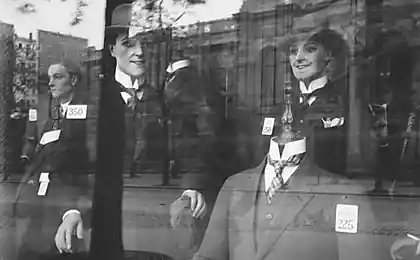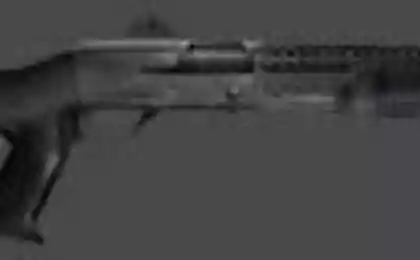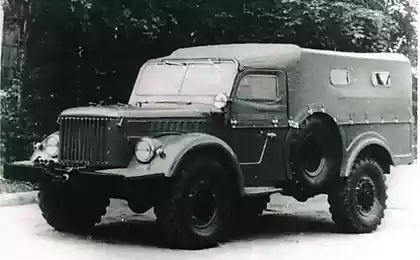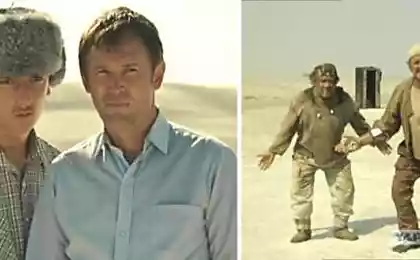864
Khmer version of the "bright future"
inspired by the great post forum2/st/25/topic274878.html
6 pictures
Unlike Lenin and Stalin, Pol Pot, the main pillar of his regime believed not the proletariat and the peasantry. But such an option communist model appeared deadlock
Every nation has its own Day of Mourning. In Cambodia, it falls on April 17th. On this day in 1975, power in the country passed into the hands of the "Khmer Rouge" - wing extremist Cambodian communists, led by Pol Pot (Saloth Sar, 1928-1998). More than three years in the country continued a grand social experiment, in which the once prosperous country has turned into one of the poorest countries on the planet. The exact number of victims of the regime is still unknown. According to various data lost from a half to two million people, or about a quarter of the country's population.
Social transformation, begun in Cambodia after the establishment of the Pol Pot regime, the level of brutality and inhumanity largely surpassed similar experiments conducted Mao, Hitler and Stalin. Photos (Creative Commons license): kevin rawlings
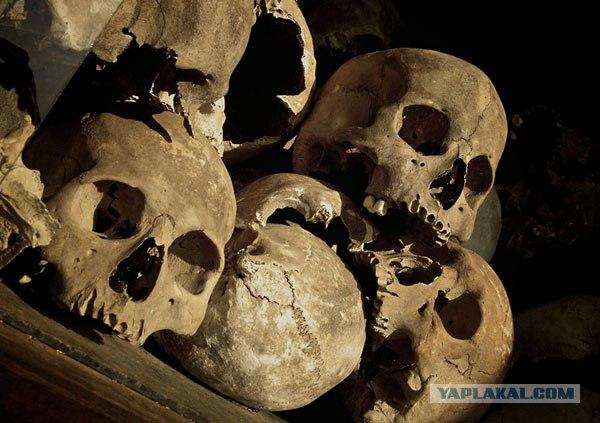
Red liberators
By 1975, the political situation in Cambodia was quite tense. The pro-American regime of General Lon Nol (Lon Nol, 1913-1985), established in 1970, had completely lost the trust of the majority of Cambodians, compromised themselves flourishing of corruption, a growing budget deficit, the decline of trade and industrial production. In addition, the country is constantly subjected to a devastating bombing by the United States. Although the main fighting took place on the territory of Laos and Vietnam border areas of Cambodia too periodically bombed by American planes, "Stripping" territory from guerrilla Ho Chi Minh (Hồ Chí Minh, 1890-1969), which resulted in heavy casualties among the civilian population. However, Lon Nol, "planted on the dollar", turning a blind eye.
It is not surprising that against this background, the increasing popularity of the country conquered the communist movement, which belonged to the leadership of the so-called "Khmer Rouge" (Rouge calls himself the general population of Cambodia) Cambodian Maoists, uncompromisingly attuned to end the "puppet" pro-American government. The country has started a guerrilla war, which every year brought nearer "Khmer Rouge" to victory.
However, the Cambodian communists were not alone in their struggle: they are actively supported by China and Vietnam. Americans are gradually handed over their positions in Indochina. In 1973, they began to withdraw its troops from the occupied territories. Without their support Lon Nol regime could no longer resist the opposition and 1 April 1975 general together with their closest associates fled the country. And on April 17 in Phnom Penh residents poured into the streets to greet their liberators - "Khmer Rouge", to enter the city on tanks and armored vehicles. Cambodians are tired of war and political turmoil and hoped that the new government finally bring the long-awaited peace and stability.
Cambodia has long been predominantly agrarian state. On this and would like to build its economy leaders "of the Khmer Rouge." But their ambitious agricultural plans proved unenforceable. Photos (Creative Commons license): from the archives of International Rice Research Institute
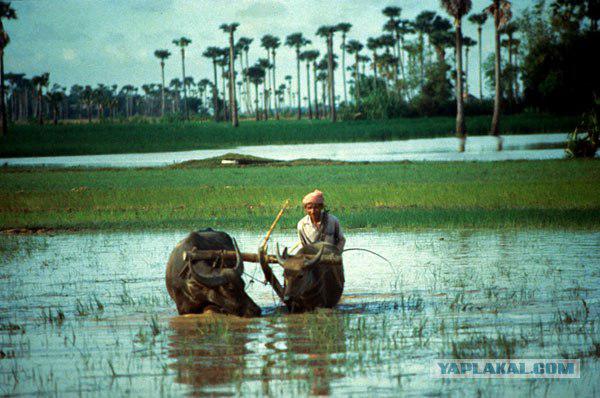
The communist experiment
However, Cambodians are happy for long. Having occupied Phnom Penh, "Khmer Rouge" almost immediately announced the mass deportations of its citizens, including young children, the elderly, the sick and the disabled. For 72 hours, most residents of the capital of Cambodia were sent to the countryside for forced agricultural work. Similar events were held in other major towns. "The city - a center of counter-revolution, the main revolutionary force - is the peasantry", - announced in the metropolitan radio Pol Pot became prime minister of the newly proclaimed Democratic Kampuchea. In the city there were only soldiers, officials of the new government and the workers of the capital's largest factories.
Eviction from the urban Cambodians, as well as the villagers were united in labor communes, the main task of which was the cultivation of rice. Since the new government planned to turn Cambodia into a powerful agrarian state. They were closed schools, universities, theaters and hospitals. In an effort to build a classless society, the government of Pol Pot's less than a year has turned Cambodia into a vast labor camp and its inhabitants - slaves forced to work in the fields under the scorching sun for twelve hours a day.
The entire population of the country was divided into two categories: the "old" or "core" people and the "new" people. In the first category were the villagers of mountain and forest areas of eastern and south-eastern regions of the country, who control the "Khmer Rouge" during the guerrilla war. The population of these areas has always lived in worse conditions than those in the plains, and has traditionally been opposed to them. However, this is the uneducated and uninformed of the population served as a source for Pol Pot army and party cadres.
The second category includes urban residents in those areas of the country that were once under the control of the government of Lon Nol. Since they were related to the "hostile" pro-American regime, the new government dubbed them "parasitic plants", representing the potential social and political threat to the country. In this category were numerous peasants who have migrated to the city from the border to escape the American bombing. They were deprived of any rights; Many immediately executed or put in prison. In addition, outside of the law was put intelligentsia, students, teachers, doctors, scientists, and religious leaders. To save lives, many of them had to carefully hide their involvement in education and religious institutions.
"Khmer Rouge" Cambodia virtually isolated from the outside world. Embassies and consulates of most countries have been closed and their workers hurried to leave the country. The exceptions were diplomatic representatives of North Korea, China, Laos, Romania and Cuba.
The leader of the "Khmer Rouge" Pol Pot began his career as a humble university professor, but went down in history as one of the most brutal dictators of the last century. Photo: ITAR-TASS Pol Pot

How to become a dictator
Salote Sar - that was the name of the man who came in the revolutionary history under the pseudonym Pol Pot - was born May 19, 1925 in the family of a wealthy farmer. The future leader of the "Khmer Rouge" and received a good all-round education. He first studied in a Buddhist monastery in Phnom Penh, and then in the French Catholic school. In 1949 Salote Sarah managed to get a government scholarship to go and study in France.
It was there that the young students interested in the ideas of Marxism, and together with his closest ally Ieng Sary (Ieng Sary) enters into a Marxist group, and then, in 1952, and the French Communist Party (Parti communiste français).
At the same time, in a special issue of the student magazine published by Cambodian students published an article Salote Sarah "Monarchy or Democracy," in which he first expressed his radical political views.
The future dictator familiar with the ideas of Stalin, Lenin and Mao (Mao Zedong, 1893-1976). As time passes, some of which he tries to put into practice at home.
However Salote Sar fond of not only political literature: he was well acquainted with the works of French classics, especially Rousseau (Jean-Jacques Rousseau, 1712-1778), knew by heart the poems of Louis Aragon (Louis Aragon, 1897-1982) and Eugene Gilvika (Eugène Guillevic , 1907-1997).
In 1953, a young Cambodian stopped his studies in France and returned to his homeland, where he worked for a while quietly university teacher, and then threw himself into politics.
In the early 1960s he became the organizer and the main ideologue of the radical extreme left organization, which in the future and has become known as the "Khmer Rouge". In 1963, Pol Pot led the Communist Party of Kampuchea, almost completely destroying its former management. As a result, "Khmer Rouge" were at the forefront of left-wing movement. Won the civil war, they brought their leader to power over Cambodia.
Living in a society without classes
The daily life of the majority of Cambodians in the new state was becoming more severe. In 1976, the government "Khmer Rouge" has prepared the so-called four-year plan has set unprecedented standards in scale rice harvest. However, tired of war, the country was simply not capable of doing that.
People who worked in the rice fields for many hours every day hundreds died of hunger, exhaustion and disease. "Khmer Rouge" and used child labor, but children are usually not working in the rice fields, and performed less hard work. Since the schools were closed, all the education of the younger generation was reduced to political studies.
Life in the Democratic Kampuchea was the fact banned. "Collective" became even weddings. The bride and groom were collected in large groups and parties in order designate as husbands and wives. Newly wife had to hold hands and swear to be faithful to each other until the end of his days. After that, the couple issued "enhanced rations" and were allowed to stay together for a few days, after which they were to return to work. If the bride refused her chosen groom party, it was waiting for severe punishment.
Meanwhile, some of the couples continue to live together and after Pol Pot's regime was overthrown. For example, the current Prime Minister Hun Sen (Hun Sen) is still living in a marriage with a woman, in which he was ordered to get married during the dictatorship.
The totalitarian press
In the Democratic Kampuchea, as in any totalitarian state, it was created an extensive system of prisons and doprosnyh centers. Across the country, there were more than two hundred. Nevertheless, there is not enough places as "Khmer Rouge" saw enemies everywhere.
Among the main internal enemies of the ruling party were those who collaborated with the regime of Lon Nol, all national minorities of the country (primarily ethnic Cham and Vietnamese) as well as intellectuals. There were also the so-called external enemies: all Cambodians could blame on the slightest suspicion of having links with the exploration of Thailand, Vietnam, or the Soviet Union. Under these charges often fall not only ordinary Cambodians, but also by the members of the ruling party, in which periodically carry out "cleansing».
For three and a half years of the dictatorship of the "Khmer Rouge" were executed by nearly half a million Cambodians accused of betraying the motherland and the ideals of the revolution.
The main prison, known as S-21, or Tuol Sleng, in Phnom Penh was. She was in a building equipped with one of the schools in the capital and was a secret center, where not only the prisoners, but also were interrogated under torture and mass executions committed.
Only a few S-21 prisoners managed to escape to freedom, and it happened after the fall of Democratic Kampuchea. Sami "Khmer Rouge" is not released from it a single person.
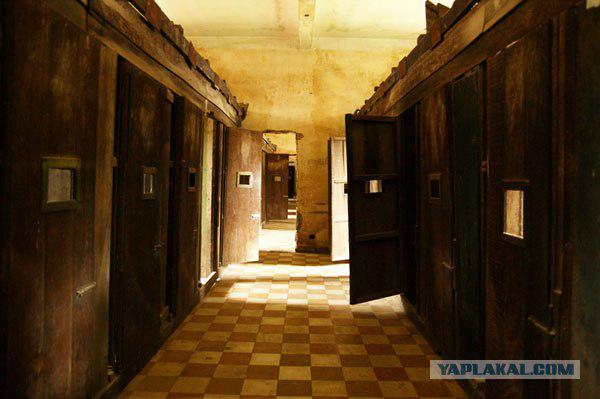
Upon arrival at the jail inmates first thing photographed, and then recorded in detail their biographies. After that, the arrested were sent to the camera, most of which were tiny, about the size of a meter and a half meters. But even if the camera was placed a few people, it was strictly forbidden to talk to each other.
Every day, in the S-21 interrogation carried out, often using violent and sophisticated torture. To obtain the necessary evidence from the interrogation, they were tortured by electric charges, they drove needles under their fingernails, cut with knives and sharp palm leaves, suffocated by a plastic bag, burned with cigarettes, hung upside down for the day.
Not surprisingly, after such humiliation, many were ready to confess to anything.
Every day at the prison were conducted mass executions. The executions were rare, as management "Khmer Rouge" prefer to save ammunition for more important purposes. The condemned are usually sacrificed agricultural hoes. Please executed were buried in the cemetery near the S-21, but soon there is no space left, and their bodies began to export outside of Phnom Penh, in the area of Choung Ek.
The prison Tuol Sleng kept at bay not only the prisoners, but the guards who for the slightest offense could also take place in camera. For them, it was drawn up a long list of rules, which they were obliged to obey. For example, while on duty they were strictly forbidden to sit down or to lean against the wall; any contact with the prisoners was also strictly forbidden.
Today, the Tuol Sleng prison turned into a museum. Foreign tourists are experiencing here is a real shock when viewing the instruments of torture exhibited, in its diversity and sophistication surpassing anything ever invented in the history of bodily suffering. Pol Pot made a bloody conveyor, which in just three years has been destroyed more people than in all the years of Stalinist repression.
National Salvation Front
Excessive brutality policy pursued by the party Pol Pot could not widespread public disturbances. The first mass protests broke out in September 1975 in the province of Siem Reap, but were brutally suppressed. In February 1977, an uprising broke out soldiers of the 170th Division, which was entrusted with the protection of Phnom Penh. This was followed by the revolt in the north-western and eastern parts of the country.
Gradually the Democratic Kampuchea began to form liberated areas where the victims flocked to the Pol Pot terror, ready to fight the regime.
The collapse of the "communist experiment" to approach and the ineffectiveness of the economic policy of the Government of Kampuchea. Scheduled huge harvests of rice to achieve and failed, despite the fact that the work in the rice fields continued even at night. "Khmer Rouge" is very poorly versed in the intricacies of agriculture, also prevented an atmosphere of fear, pumped across the country.
The regional leaders are often afraid to report to the center on the inability to perform the assigned plan and inflated figures in their reports, and the exchange of information directly between provinces was banned. In general, increased secrecy pervaded all areas of the Democratic Kampuchea.
Former Commandant S-21, Kang Kek Jeu left the "Khmer Rouge" in 1980 and became a Christian. In 1999, he was arrested, and six years later he was brought before an international tribunal. In November last year, comrade Pol Pot was back in the dock. He pleaded guilty to the murder of fifteen thousand men, and apologized to the victims' relatives. Photos: Courtesy of Extraordinary Chambers in the Courts of Cambodia
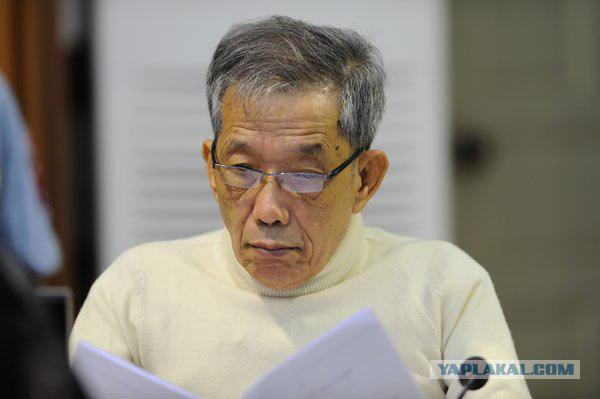
In addition, a weakened country was embroiled in a war with neighboring Vietnam, that "Khmer Rouge" was considered the main enemy of the regime, "betrayed the communist idea", as the Soviet Union.
In 1977, diplomatic relations between the two countries were broken off, and in the border areas of armed conflict broke out constantly. But as the Vietnamese army was much stronger and more professional than their opponents, combat formations "Khmer Rouge" suffered heavy losses. In addition, Vietnam launched an aggressive propaganda, calling on Cambodians to overthrow the regime of Pol Pot.
In 1978, with the participation of Vietnam was established Kampuchean United Front for National Salvation, and January 7, 1979, Vietnamese troops marched into Phnom Penh, putting an end to the regime "Khmer Rouge».
Echo Cambodian "democracy»
After three and a half years of bloody dictatorship the country was completely devastated and turned into one of the poorest countries on the planet. It should be noted that the consequences of the Pol Pot regime in Cambodia were felt for many years after his overthrow. In the 1980s and 1990s, Pol Pot armed groups waged a fierce guerrilla war in many parts of the country, took hostages and terrorist acts staged right in the center of Phnom Penh.
During the "Khmer Rouge" in the country (especially in border areas), there are many minefields, some of which are still up to the end and not cleared. Acute problems of shortage of doctors, engineers, teachers and other professionals. Of course, all this could not be done without broad international support.
Source:
6 pictures
Unlike Lenin and Stalin, Pol Pot, the main pillar of his regime believed not the proletariat and the peasantry. But such an option communist model appeared deadlock
Every nation has its own Day of Mourning. In Cambodia, it falls on April 17th. On this day in 1975, power in the country passed into the hands of the "Khmer Rouge" - wing extremist Cambodian communists, led by Pol Pot (Saloth Sar, 1928-1998). More than three years in the country continued a grand social experiment, in which the once prosperous country has turned into one of the poorest countries on the planet. The exact number of victims of the regime is still unknown. According to various data lost from a half to two million people, or about a quarter of the country's population.
Social transformation, begun in Cambodia after the establishment of the Pol Pot regime, the level of brutality and inhumanity largely surpassed similar experiments conducted Mao, Hitler and Stalin. Photos (Creative Commons license): kevin rawlings

Red liberators
By 1975, the political situation in Cambodia was quite tense. The pro-American regime of General Lon Nol (Lon Nol, 1913-1985), established in 1970, had completely lost the trust of the majority of Cambodians, compromised themselves flourishing of corruption, a growing budget deficit, the decline of trade and industrial production. In addition, the country is constantly subjected to a devastating bombing by the United States. Although the main fighting took place on the territory of Laos and Vietnam border areas of Cambodia too periodically bombed by American planes, "Stripping" territory from guerrilla Ho Chi Minh (Hồ Chí Minh, 1890-1969), which resulted in heavy casualties among the civilian population. However, Lon Nol, "planted on the dollar", turning a blind eye.
It is not surprising that against this background, the increasing popularity of the country conquered the communist movement, which belonged to the leadership of the so-called "Khmer Rouge" (Rouge calls himself the general population of Cambodia) Cambodian Maoists, uncompromisingly attuned to end the "puppet" pro-American government. The country has started a guerrilla war, which every year brought nearer "Khmer Rouge" to victory.
However, the Cambodian communists were not alone in their struggle: they are actively supported by China and Vietnam. Americans are gradually handed over their positions in Indochina. In 1973, they began to withdraw its troops from the occupied territories. Without their support Lon Nol regime could no longer resist the opposition and 1 April 1975 general together with their closest associates fled the country. And on April 17 in Phnom Penh residents poured into the streets to greet their liberators - "Khmer Rouge", to enter the city on tanks and armored vehicles. Cambodians are tired of war and political turmoil and hoped that the new government finally bring the long-awaited peace and stability.
Cambodia has long been predominantly agrarian state. On this and would like to build its economy leaders "of the Khmer Rouge." But their ambitious agricultural plans proved unenforceable. Photos (Creative Commons license): from the archives of International Rice Research Institute

The communist experiment
However, Cambodians are happy for long. Having occupied Phnom Penh, "Khmer Rouge" almost immediately announced the mass deportations of its citizens, including young children, the elderly, the sick and the disabled. For 72 hours, most residents of the capital of Cambodia were sent to the countryside for forced agricultural work. Similar events were held in other major towns. "The city - a center of counter-revolution, the main revolutionary force - is the peasantry", - announced in the metropolitan radio Pol Pot became prime minister of the newly proclaimed Democratic Kampuchea. In the city there were only soldiers, officials of the new government and the workers of the capital's largest factories.
Eviction from the urban Cambodians, as well as the villagers were united in labor communes, the main task of which was the cultivation of rice. Since the new government planned to turn Cambodia into a powerful agrarian state. They were closed schools, universities, theaters and hospitals. In an effort to build a classless society, the government of Pol Pot's less than a year has turned Cambodia into a vast labor camp and its inhabitants - slaves forced to work in the fields under the scorching sun for twelve hours a day.
The entire population of the country was divided into two categories: the "old" or "core" people and the "new" people. In the first category were the villagers of mountain and forest areas of eastern and south-eastern regions of the country, who control the "Khmer Rouge" during the guerrilla war. The population of these areas has always lived in worse conditions than those in the plains, and has traditionally been opposed to them. However, this is the uneducated and uninformed of the population served as a source for Pol Pot army and party cadres.
The second category includes urban residents in those areas of the country that were once under the control of the government of Lon Nol. Since they were related to the "hostile" pro-American regime, the new government dubbed them "parasitic plants", representing the potential social and political threat to the country. In this category were numerous peasants who have migrated to the city from the border to escape the American bombing. They were deprived of any rights; Many immediately executed or put in prison. In addition, outside of the law was put intelligentsia, students, teachers, doctors, scientists, and religious leaders. To save lives, many of them had to carefully hide their involvement in education and religious institutions.
"Khmer Rouge" Cambodia virtually isolated from the outside world. Embassies and consulates of most countries have been closed and their workers hurried to leave the country. The exceptions were diplomatic representatives of North Korea, China, Laos, Romania and Cuba.
The leader of the "Khmer Rouge" Pol Pot began his career as a humble university professor, but went down in history as one of the most brutal dictators of the last century. Photo: ITAR-TASS Pol Pot

How to become a dictator
Salote Sar - that was the name of the man who came in the revolutionary history under the pseudonym Pol Pot - was born May 19, 1925 in the family of a wealthy farmer. The future leader of the "Khmer Rouge" and received a good all-round education. He first studied in a Buddhist monastery in Phnom Penh, and then in the French Catholic school. In 1949 Salote Sarah managed to get a government scholarship to go and study in France.
It was there that the young students interested in the ideas of Marxism, and together with his closest ally Ieng Sary (Ieng Sary) enters into a Marxist group, and then, in 1952, and the French Communist Party (Parti communiste français).
At the same time, in a special issue of the student magazine published by Cambodian students published an article Salote Sarah "Monarchy or Democracy," in which he first expressed his radical political views.
The future dictator familiar with the ideas of Stalin, Lenin and Mao (Mao Zedong, 1893-1976). As time passes, some of which he tries to put into practice at home.
However Salote Sar fond of not only political literature: he was well acquainted with the works of French classics, especially Rousseau (Jean-Jacques Rousseau, 1712-1778), knew by heart the poems of Louis Aragon (Louis Aragon, 1897-1982) and Eugene Gilvika (Eugène Guillevic , 1907-1997).
In 1953, a young Cambodian stopped his studies in France and returned to his homeland, where he worked for a while quietly university teacher, and then threw himself into politics.
In the early 1960s he became the organizer and the main ideologue of the radical extreme left organization, which in the future and has become known as the "Khmer Rouge". In 1963, Pol Pot led the Communist Party of Kampuchea, almost completely destroying its former management. As a result, "Khmer Rouge" were at the forefront of left-wing movement. Won the civil war, they brought their leader to power over Cambodia.
Living in a society without classes
The daily life of the majority of Cambodians in the new state was becoming more severe. In 1976, the government "Khmer Rouge" has prepared the so-called four-year plan has set unprecedented standards in scale rice harvest. However, tired of war, the country was simply not capable of doing that.
People who worked in the rice fields for many hours every day hundreds died of hunger, exhaustion and disease. "Khmer Rouge" and used child labor, but children are usually not working in the rice fields, and performed less hard work. Since the schools were closed, all the education of the younger generation was reduced to political studies.
Life in the Democratic Kampuchea was the fact banned. "Collective" became even weddings. The bride and groom were collected in large groups and parties in order designate as husbands and wives. Newly wife had to hold hands and swear to be faithful to each other until the end of his days. After that, the couple issued "enhanced rations" and were allowed to stay together for a few days, after which they were to return to work. If the bride refused her chosen groom party, it was waiting for severe punishment.
Meanwhile, some of the couples continue to live together and after Pol Pot's regime was overthrown. For example, the current Prime Minister Hun Sen (Hun Sen) is still living in a marriage with a woman, in which he was ordered to get married during the dictatorship.
The totalitarian press
In the Democratic Kampuchea, as in any totalitarian state, it was created an extensive system of prisons and doprosnyh centers. Across the country, there were more than two hundred. Nevertheless, there is not enough places as "Khmer Rouge" saw enemies everywhere.
Among the main internal enemies of the ruling party were those who collaborated with the regime of Lon Nol, all national minorities of the country (primarily ethnic Cham and Vietnamese) as well as intellectuals. There were also the so-called external enemies: all Cambodians could blame on the slightest suspicion of having links with the exploration of Thailand, Vietnam, or the Soviet Union. Under these charges often fall not only ordinary Cambodians, but also by the members of the ruling party, in which periodically carry out "cleansing».
For three and a half years of the dictatorship of the "Khmer Rouge" were executed by nearly half a million Cambodians accused of betraying the motherland and the ideals of the revolution.
The main prison, known as S-21, or Tuol Sleng, in Phnom Penh was. She was in a building equipped with one of the schools in the capital and was a secret center, where not only the prisoners, but also were interrogated under torture and mass executions committed.
Only a few S-21 prisoners managed to escape to freedom, and it happened after the fall of Democratic Kampuchea. Sami "Khmer Rouge" is not released from it a single person.

Upon arrival at the jail inmates first thing photographed, and then recorded in detail their biographies. After that, the arrested were sent to the camera, most of which were tiny, about the size of a meter and a half meters. But even if the camera was placed a few people, it was strictly forbidden to talk to each other.
Every day, in the S-21 interrogation carried out, often using violent and sophisticated torture. To obtain the necessary evidence from the interrogation, they were tortured by electric charges, they drove needles under their fingernails, cut with knives and sharp palm leaves, suffocated by a plastic bag, burned with cigarettes, hung upside down for the day.
Not surprisingly, after such humiliation, many were ready to confess to anything.
Every day at the prison were conducted mass executions. The executions were rare, as management "Khmer Rouge" prefer to save ammunition for more important purposes. The condemned are usually sacrificed agricultural hoes. Please executed were buried in the cemetery near the S-21, but soon there is no space left, and their bodies began to export outside of Phnom Penh, in the area of Choung Ek.
The prison Tuol Sleng kept at bay not only the prisoners, but the guards who for the slightest offense could also take place in camera. For them, it was drawn up a long list of rules, which they were obliged to obey. For example, while on duty they were strictly forbidden to sit down or to lean against the wall; any contact with the prisoners was also strictly forbidden.
Today, the Tuol Sleng prison turned into a museum. Foreign tourists are experiencing here is a real shock when viewing the instruments of torture exhibited, in its diversity and sophistication surpassing anything ever invented in the history of bodily suffering. Pol Pot made a bloody conveyor, which in just three years has been destroyed more people than in all the years of Stalinist repression.
National Salvation Front
Excessive brutality policy pursued by the party Pol Pot could not widespread public disturbances. The first mass protests broke out in September 1975 in the province of Siem Reap, but were brutally suppressed. In February 1977, an uprising broke out soldiers of the 170th Division, which was entrusted with the protection of Phnom Penh. This was followed by the revolt in the north-western and eastern parts of the country.
Gradually the Democratic Kampuchea began to form liberated areas where the victims flocked to the Pol Pot terror, ready to fight the regime.
The collapse of the "communist experiment" to approach and the ineffectiveness of the economic policy of the Government of Kampuchea. Scheduled huge harvests of rice to achieve and failed, despite the fact that the work in the rice fields continued even at night. "Khmer Rouge" is very poorly versed in the intricacies of agriculture, also prevented an atmosphere of fear, pumped across the country.
The regional leaders are often afraid to report to the center on the inability to perform the assigned plan and inflated figures in their reports, and the exchange of information directly between provinces was banned. In general, increased secrecy pervaded all areas of the Democratic Kampuchea.
Former Commandant S-21, Kang Kek Jeu left the "Khmer Rouge" in 1980 and became a Christian. In 1999, he was arrested, and six years later he was brought before an international tribunal. In November last year, comrade Pol Pot was back in the dock. He pleaded guilty to the murder of fifteen thousand men, and apologized to the victims' relatives. Photos: Courtesy of Extraordinary Chambers in the Courts of Cambodia

In addition, a weakened country was embroiled in a war with neighboring Vietnam, that "Khmer Rouge" was considered the main enemy of the regime, "betrayed the communist idea", as the Soviet Union.
In 1977, diplomatic relations between the two countries were broken off, and in the border areas of armed conflict broke out constantly. But as the Vietnamese army was much stronger and more professional than their opponents, combat formations "Khmer Rouge" suffered heavy losses. In addition, Vietnam launched an aggressive propaganda, calling on Cambodians to overthrow the regime of Pol Pot.
In 1978, with the participation of Vietnam was established Kampuchean United Front for National Salvation, and January 7, 1979, Vietnamese troops marched into Phnom Penh, putting an end to the regime "Khmer Rouge».
Echo Cambodian "democracy»
After three and a half years of bloody dictatorship the country was completely devastated and turned into one of the poorest countries on the planet. It should be noted that the consequences of the Pol Pot regime in Cambodia were felt for many years after his overthrow. In the 1980s and 1990s, Pol Pot armed groups waged a fierce guerrilla war in many parts of the country, took hostages and terrorist acts staged right in the center of Phnom Penh.
During the "Khmer Rouge" in the country (especially in border areas), there are many minefields, some of which are still up to the end and not cleared. Acute problems of shortage of doctors, engineers, teachers and other professionals. Of course, all this could not be done without broad international support.
Source:
















